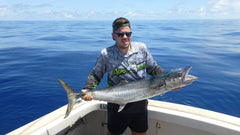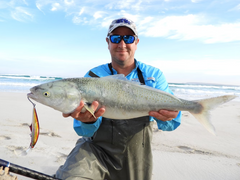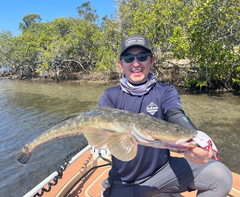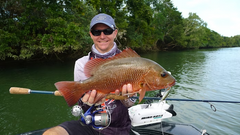Aussies love beach fishing, and among the many iconic surf species, tailor would have to be one of the most sought-after. Surf beaches exist across the bottom half of the country, and tailor can be caught from most of them.

Anglers have been catching tailor off the beach for generations, with much of the knowledge passed down from old to young, and many of the old-school techniques are still practiced today. With developments in fishing tackle and a better understanding of fish habits, though, tailor diehards are still constantly learning new things about their favorite fish. In this blog, we will look at how to catch beach tailor, how to identify good areas, and a few tips and tricks as well. But first, let’s meet the tailor.
A Beach Favourite Tailor (Pomatomus saltatrix) are the only species in the family Pomatomidae, but they are found in a number of locations worldwide, including Southern Africa, South East Asia, the East Coast of North America, The Mediterranean, New Zealand, and of course, Australia. They are known by a few different names around the globe, but here they are mostly just known as "tailor."

They are a highly migratory species, moving along the coast in large schools in search of food. In Australia, tailor spend the summer months in southern latitudes, moving toward the northern limits of their range (South East Queensland in the east and Exmouth in the west) in winter and early spring.

Their ravenous appetite and tendency to school in large numbers make them a popular beach target, and they are reputable table fare if the catch is bled and looked after properly. Fishing for Tailor Being such an aggressive species, it’s no surprise they can be targeted using a range of techniques and tackle. Bait, lure, and even fly anglers can cash in on the tailor run, but it’s not always as simple as turning up to a beach and dropping a line in. Understanding the types of beaches and conditions they prefer is one part of the equation, and being able to present a bait, lure, or fly to their liking is another.  Finding a Beach for Tailor For most beach fishing, the key is to find a good gutter, and tailor fishing is no different. However, the small, shallow gutters associated with species like whiting, bream, flathead, and dart aren’t always the best places to find these toothy speedsters. You can read more about fishing for these species in our guide to beach fishing blog.
Finding a Beach for Tailor For most beach fishing, the key is to find a good gutter, and tailor fishing is no different. However, the small, shallow gutters associated with species like whiting, bream, flathead, and dart aren’t always the best places to find these toothy speedsters. You can read more about fishing for these species in our guide to beach fishing blog.

How to Catch Tailor on Lures Lure fishing is a very effective way to catch these aggressive predators and avoids the mess associated with bait fishing. When luring for beach tailor, having the right gear will improve your catch rate substantially. Most luring off the beach is done with longer surf-style rods. Daiwa’s Over There range and Samaki’s Zing G3 Surf range are designed for spinning off the beach and rocks and come in different models suited to lure size. For lures, many types work, but bigger is usually better on the sand. Halco Twisties, Spanyid Raiders, and Sure Catch Knights are all popular, with models from 10g to 85g. Topwater lures like the Zerek Zappelin 115, Halco Roosta Popper 105, and Nomad Dartwing 130 FLT are also great if you're looking to create more commotion.

How to Catch Tailor on Bait Bait fishing for beach tailor is an old technique that still works well. Just like with lures, larger baits are preferred over smaller ones. Using larger baits prevents smaller species from eating your bait and reduces the likelihood of them eating the whole rig. Heavier surf rods are ideal for throwing big baits. Gary Howard has rods perfect for beach tailor fishing. The Greenback Mid-Mount and Chopper Special Mid-Mount are ideal for various applications.

Tailor-Made Fun Whether you’re a lure purist or a bait traditionalist, tailor are an awesome target for southern anglers and provide a lot of fun. There’s nothing quite like a hot tailor bite with the sand between your toes, so if you haven’t tried beach fishing for tailor, make sure you’re ready next time the tailor swing by your local beach!

 Select Store
Select Store








